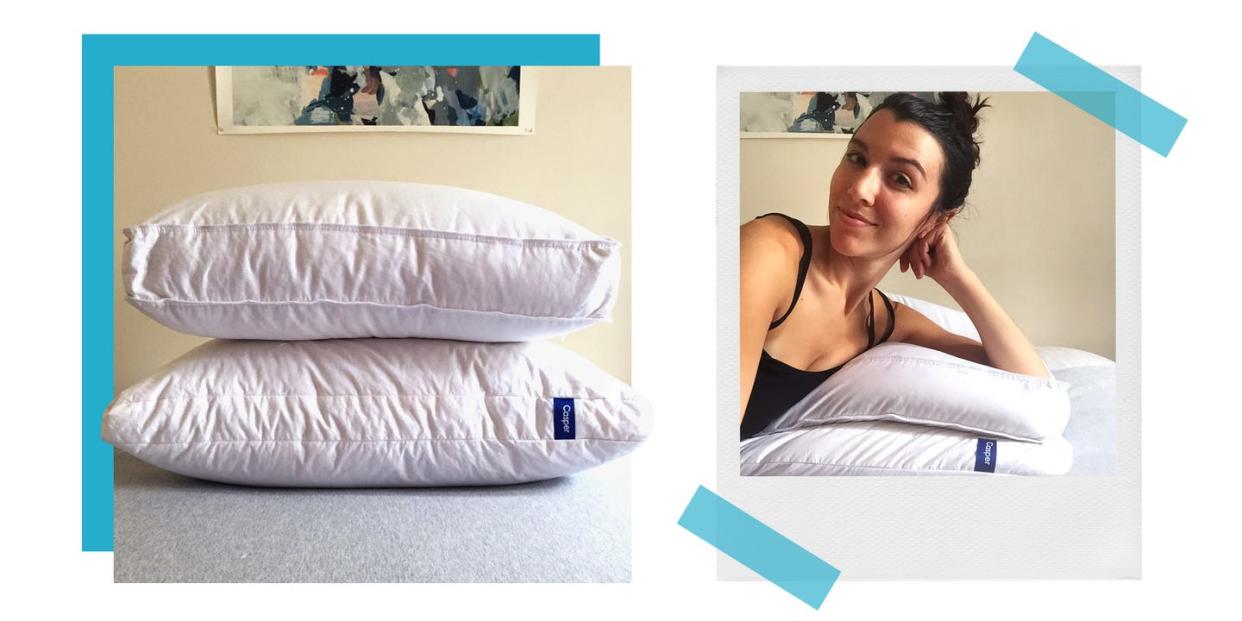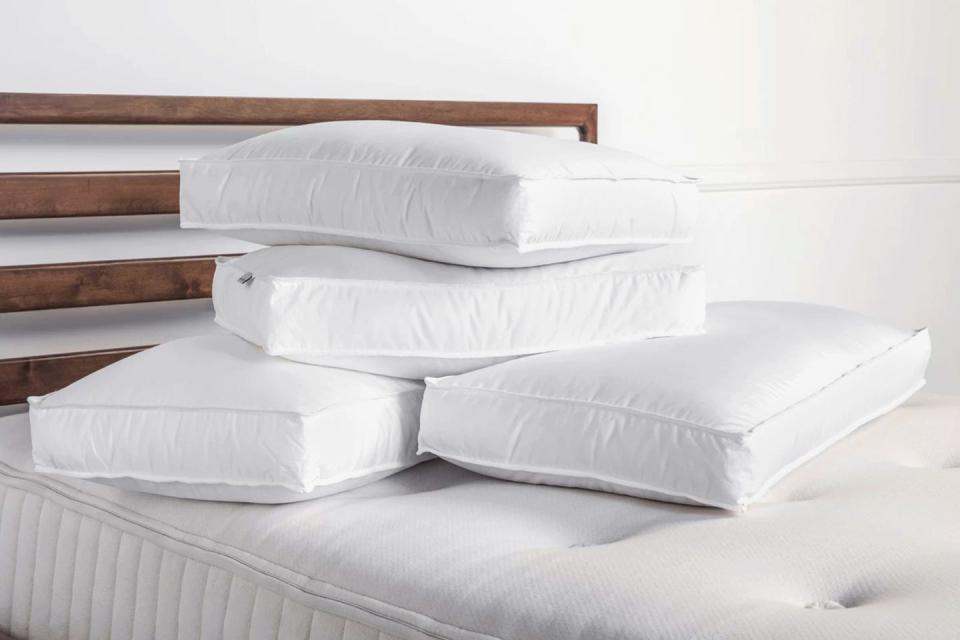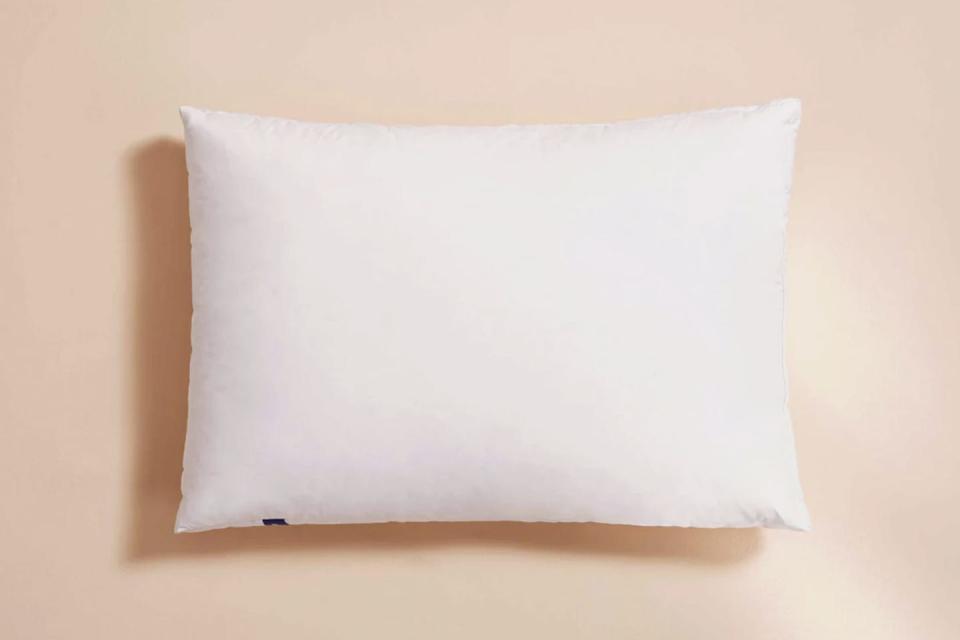I Tested Out Parachute and Casper's Brand-New Down Pillows

"Hearst Magazines and Yahoo may earn commission or revenue on some items through the links below."
There are a lot of cool things out there that make us wonder — do they really work? In our I Tried It series, we set out to use them in the real world and have determined that, in fact, they really do.
On Trial: Casper's Down Pillow and Parachute's Down Side-Sleeper Pillow
Tester: Melanie Yates, early bird, side-and-stomach sleeper, sleeps with a minimum of four pillows
The Brief: I'm a longtime fan of Casper and Parachute's bedding, and coincidentally, both brands launched new down pillows around the same time this summer. I wanted to test both pillows to see how they measured up side by side.
In a world full of so much innovation and disruption — particularly in the bedding sector — my fascination with down pillows persists because they are adept at doing what so many other pillow types struggle with. High-quality down pillows have a balanced, responsive, yet supportive feel, and I find that they generally have much better airflow than ones filled with ventilated or shredded foam.
In late June, Parachute launched their Side-Sleeper Pillow, and a few weeks later, Casper came out with their first-ever Down Pillow. I swapped both of these into my bedding rotation and lived with them side-by-side for about a month. Though both are within the same product category, and at first glance seem very similar, the pillows differ in a few distinguishing ways.
Allow me to break down these down pillows one by one:
Parachute's Side-Sleeper Down Pillow

Parachute's Side-Sleeper Pillow (also available in a down-alternative version) is unique from their other pillow offerings in that the side-sleeper is more rectangular in shape and features a 3.5-inch border gusset. This gusset feature helps give the pillow some structure, to prevent it from being mashed into an amorphous blob in the middle of the night.
Why does this matter? Well for one, it's what makes this pillow's silhouette better suited for side sleepers, as advertised. In my own experience, if the pillow that I'm sleeping on is uneven, lumpy, or limp, some always-awake part of my brain will try to subtly achieve fluff equilibrium in the night, which results in tossing and turning, interrupted REM sleep, and a too-short fuse the next day. The gusset, which helps keep my neck in alignment and the down fill evenly distributed, gives this pillow a backbone that most down pillows completely lack.
The fill itself comprises European white duck down and feather fibers, and comes from a certified Responsible Down Standard (RDS) supplier, which upholds ethical down-feather-sourcing standards in home and outdoor gear. This pillow is truly light as a feather, but it's generously stuffed to a 750 fill power, and I could feel the impact of this when laying my head down on it. Though the pillow is undoubtedly very soft (probably too soft for back sleepers), the medium-density down provides a buoyant feel, so when my head hits the pillow, it doesn't immediately sink down through the fluff.
The gusseted border doesn't make this pillow ideal for spooning, however, since it's awkward to try to spoon something with corners. But for side-sleeping — even with an arm underneath the pillow — the height at which my neck rests feels comfortable and supported, and once I fall asleep on it, I tend to stay put through the night.
Casper's Down Pillow

Casper's Down Pillow, if you can believe it, is even more of a big softy than the Parachute pillow. This pillow has a rounded and more puffed-up appearance, while feeling just as responsive and airy. It has a unique internal five-chamber construction that prevents the fill from clumping into one corner, so even after sleeping and spooning with it, it fluffs up to its original silhouette like new.
This pillow has a 2-inch gusset, which certainly helps the pillow keep its structure, but it doesn't feel quite as noticeable as the Parachute pillow. I did feel my head sink a little too deeply into this pillow when I slept on my side, though this low height was just right for switching to my stomach. Because of this, I'd recommend this one for stomach sleepers over side sleepers.
The fill is also comprised of an RDS-certified white duck down-and-feather blend, so although it's a little more malleable, it's even more breathable, keeping my head nice and cool in the night. Where the Parachute pillow felt a little strange to spoon with, the Casper was a perfect match, as its fill provided just the right amount of pushback to feel cozy and comfortable.
Closing Argument: When it comes to choosing between these two down pillows, their airy feel and light weight are nearly equal, they are both comprised of RDS-certified duck down feathers, and they cost almost the exact same for a standard size. It all comes down to whether you want a flat or a fluffier pick. Parachute's Side-Sleeper Down Pillow is more structured and firm, while the Casper Down Pillow is rounder and more spoonable. I now sleep with my head on the Parachute pillow while hugging the Casper, and it's a downright perfect combo.
Read More:
Upgrade Your Sheets Now, And You'll Immediately Feel the Difference
These Cooling Pillows Are a Dream for Hot Sleepers
Our Top Picks for Bed-in-a-Box Mattresses
Follow BestProducts.com on Facebook, Instagram , Twitter , and Pinterest!
You Might Also Like

